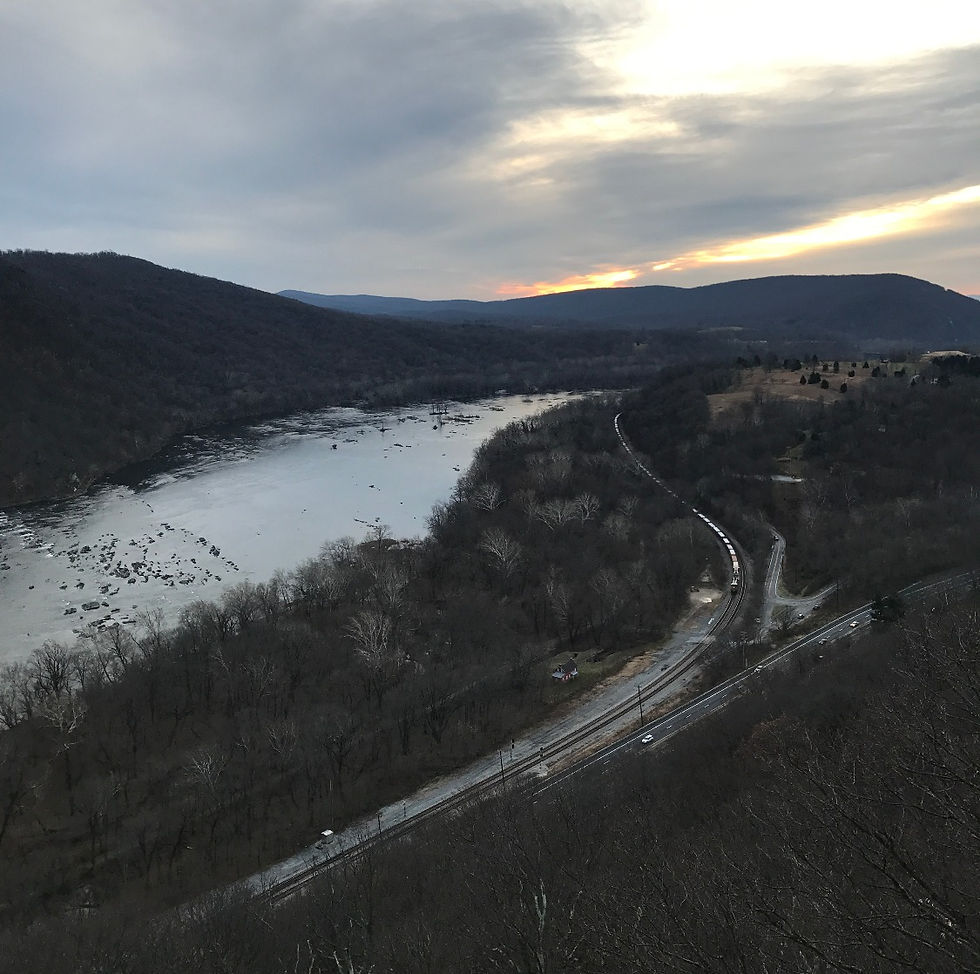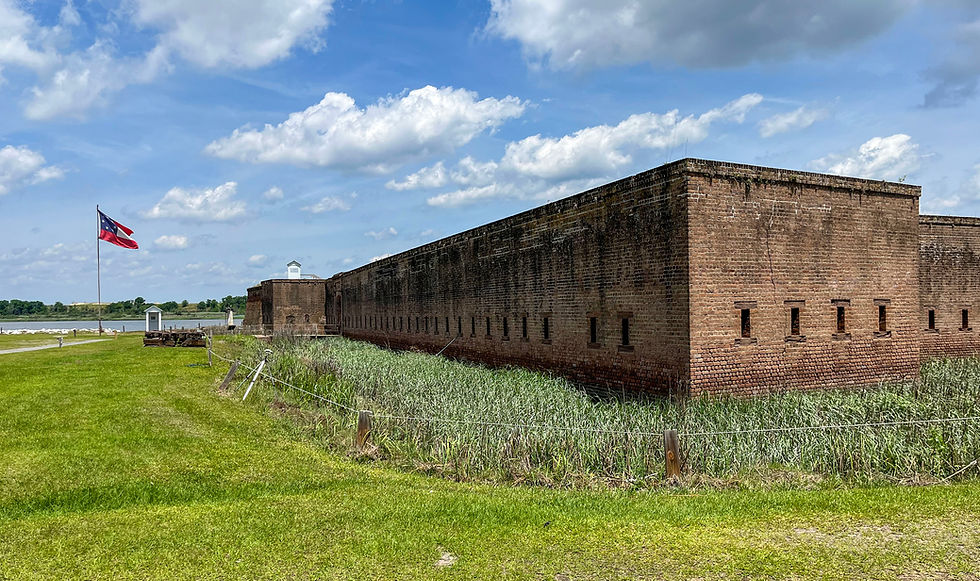Adventure Awaits
- Tim Murphy

- Oct 1, 2015
- 6 min read
Updated: Apr 23, 2021
Hey there blog readers!
Welcome to the Discover America blog. This came to me as a pretty impromptu thought, but I think it will turn out to be a very beneficial project. I want to share with the world the beauties and fascinations this great land has to offer through pictures, video, and my own written experiences. Pretty much if I were to sum up what this blog is all about, it would entail the historical, natural, and cultural treasures found here, in our own backyards. You may not realize it, but they're all around you. You just have to start looking first.

When I say treasures, I mean both things that should be appreciated and actual treasures. My favorite hobby by far is relic hunting. It is a great way to find physical pieces of history (just laying inches beneath your feet!) and to preserve these items from deterioration. Plus, isn't it more fun and fulfilling to hold a piece of history in your hand than have to read about it in a book?
My favorite historical era in US history has to be the Civil War, just because of all the stuff that was left behind! That's what really gauged my interest in relic hunting and historical preservation. I first started relic hunting about five years ago. I was a novice and, quite frankly, had no idea what I was doing. But over the years, I've found my element, and have had quite the successful career. For the last three years, I have attended Diggin' In Virginia (DIV), an organized, invitational relic hunt held in the heartland of Civil War territory. Every Spring and Fall, hundreds of relic hunters from across the nation converge upon central Virginia with the hopes to find pieces of Civil War history in the many camps and battlefields strewn across the land. Of course, we relic hunt on leased private property with the landowners' permission. And the best part? We get to keep what we find!

I remember my first DIV back in November 2012. About 400 metal-detectorists gathered at Beauregard Farm, site of multiple Union and Confederate Winter encampments and general quarters for Robert E. Lee during the Battle of Brandy Station, the largest cavalry battle of the Civil War. For three days, from 7 a.m. to 6 p.m., we hunted over 2500 acres of land, looking for elusive relics left behind long ago. Unfortunately for me, I was still in that novice stage and only managed to find a tip of a bayonet and lots and lots of iron (nails for days). However, my poor outing did not deter me. I still witnessed amazing things get pulled out of the ground by other guys. Some opened up huts--winter living quarters for the soldiers--and their trash/fire pits, pulling out some beautiful bottles, buttons, and other amazing items. One guy even pulled out a complete officer's sword with the brass hand guard still intact!
Determined to find at least one relic, I returned in the Spring, ditching my "RadioShack" detector for a more efficient machine, a GPX 5000. At this hunt, we hunted Spillman farm, a 1200 acre property adjacent to Beauregard and site of more Winter encampments and some minor skirmishes. Not nearly ten minutes into the hunt, I found my first relic: a General Service Eagle cuff button. Shock initially took over. I couldn't believe that I had found a relic, especially that quickly! I just stared at it, admiring how well-preserved it was for being buried for nearly 150 years. I carefully placed in my find box and resumed detecting. Not even 15 feet from I found the cuff button, I found another General Service Eagle, this time a coat button! Maybe it was my luck, or my skill, or perhaps it was just the new machine. Regardless of the reason, I was beginning to find relics, and that certainly boosted my confidence and kick-started my relic hunting hobby. I finished that hunt with 10 bullets, four buttons, and a few other miscellaneous camp items. I have since found more, but those stories are better left for a rainy day. You'll hear about them in due time.

In addition to relic hunting, I am also a bottle digger. Being able to find something so fragile as glass from nearly 100 years ago is in itself a feat. Most of my finds pertaining to bottles range from the turn of the century to the mid 1900s. It all started back when I was thirteen, walking with a friend, exploring the woods around our development. Kicking some leaves away, I noticed some glass sticking out of the ground. Curiosity set in, and I pulled it out. It was a 1970s Pepsi bottle, essentially trash, but it did intrigue me. Later that week, I came back to the area, armed with digging tools, and started to excavate. The deeper I went, the older stuff got. Soon, I was finding 1940s ACL (applied color label) sodas, milk bottles, Mason jars, and even some early 20th Century embossed beers. Turns out, the area I dug was part of town depository. To put it bluntly, I was digging in a dump. But you know what they say: one man's trash is another man's treasure. And it's true! Many of the items I find intact are worth a pretty penny. Just recently, I found a local dairy bottle at the site, a 1930s Loudoun Farms Dairy bottle from Purcellville, VA (a town in Loudoun County about fifteen minutes from my home). Doing a bit of research on it, I found that a bottle similar to mine sold at auction for over $700! Well, isn't that a surprise? Of course, not everything I find is worth triple digits. Usually the bottles have a value around $10-$15. Will I sell them? No way. Like I said before, being able to hold and own these items is much better than reading about them.
Currently, my bottle collection has reached nearly 400 bottles of all types. And now I'm at the point where I am finding bottles and other artifacts from the pre-1900s. Even though the finds are few and far between with the older glass, it's still older glass. Speaking of older glass, a good way to find it is to dig privies, which are the outhouses old properties had before indoor plumbing (pre-1900 usually). Privies functioned as both toilets and trash pits. So you go from digging in dumps to digging in outhouses. Wonderful. Actually, all organic matter from those times has decomposed and become dirt, so there's no rooting around in any...well, you get it. Usually these pits will produce finds ranging from the early 1900s all the way back to the 18th Century! Of course, that depends on how old the property and privy are. The average life cycle of a privy is about ten years. If you're digging a home site from the 1840s, do the math. There's potentially six privies on that property alone, each containing treasures from the past. Ok, well there's your history lesson and crash course on privies. However, it must be noted that I have not dug a privy yet, but I really want to. When that day comes, the blog will tell it all.

This country is just as rich in nature as it is in history. Around me, at least, there are many scenic trails and paths that really accentuate the beauty of this country. Over the last year, I have spent a lot of time hiking and biking around places like Harpers Ferry, the C&O Canal, and the Appalachian Trail. I have decided that, once I graduate, I'll take a six month hiatus and hike the AT from Virginia to Georgia. I plan to document each day of my hike on this blog, and hopefully by then I'll have a large enough following to get some good feedback. But, I digress. In the near future, I plan to bike the C&O Canal from Cumberland, MD to Georgetown, Washington, D.C. Be on the lookout for posts on this trip in early March!
Hiking and biking are not only great exercise, but they also provide you with beautiful scenery, amazing views, and a nice historical perspective of the land (there's that history again). It's nice to see the old ruins of buildings and read about what happened to fully appreciate the trip, instead of just mindlessly walking by the historic plaque giving it a half-glance before moving on.
I'm very excited to start this blog and I hope you are too! I know I will learn a lot from my experiences and so will you when I share these stories. I think this was a nice introductory post of what I do and how I want to operate this blog. I urge you to like and share this page with you friends, family, neighbors, acquaintances, and anyone for that matter. I want to get as many people on board as possible! The more people who follow this blog, the more exposure and appreciation America's beauty and history receives.


